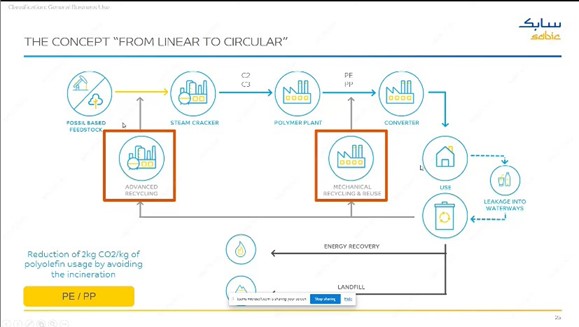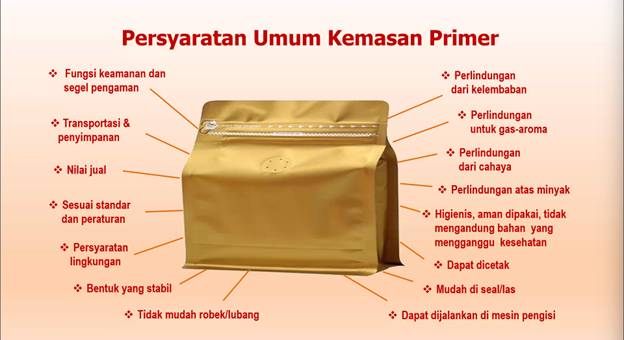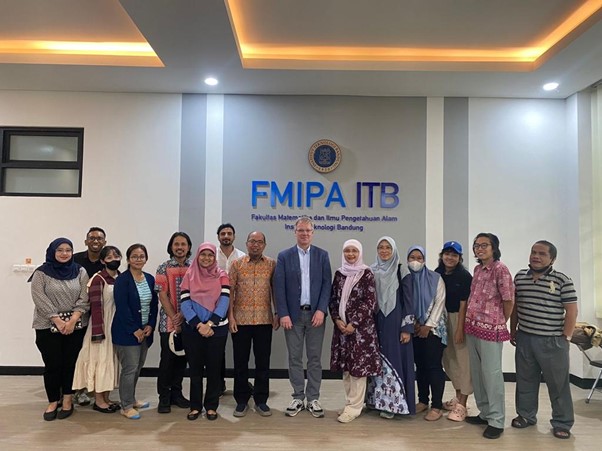Getting to Know Sustainable Packaging through Food Engineering ITB Guest Lecture

BANDUNG, itb.ac.id – Plastic is the most used packaging material. However, the use of plastic as the base material causes various environmental problems due to mismanagement of plastic wastes which are carried off to the ocean and the nature of plastic which cannot be degraded quickly.
According to data from the Indonesian Ministry of Environment and Forestry, Indonesia’s ocean is contaminated by 1.772,7 gram of waste per meter square by 2020 and was estimated to amount to 5,75 million tons.
Therefore, something needs to be done to solve this problem. One of the breakthroughs that is currently being developed in the packaging industry sector is the circular packaging concept.
Through a guest lecture on the PG3205 Food Packaging course from the Food Engineering Study Program, Faculty of Industrial Technology Institut Teknologi Bandung (FIT ITB), a Senior Manager of Sustainability Strategy and Circular Economy SABIC, Shandy Francisca explained about the project of Saudi Arabia’s Basic Industries Corporation (SABIC) in producing sustainable and environmentally friendly packaging. This lecture was held on Tuesday (18/4/2022).
Shandy Francisca, who is an alumni of Chemical Engineering ITB, said that this sustainable plastic packaging is composed of 80% polyolefins material, mono polypropylene (Mono PP) or mono polyethylene with a density of less than 1 gram per centimeter cubic. In addition to that, materials such as PVC, PVDC, PET, Aluminum Foil, and Fibres are not used in their product.
Meanwhile, other polymer materials such as PA and EVOH can only be used with a composition of less than 10%. While the requirement for sustainable aluminum packaging is that it needs to be composed of more than 50% aluminum. Lastly, the requirement for sustainable paper packaging is that it needs to have more than 50% of fibers composition with its outer layer needing to be made from paper.
She added, in creating a sustainable packaging, there are several steps that need to be taken. First is reducing the use of plastic by creating a stronger packaging that utilizes lower density material with high efficiency.
Second step is through a redesign to yield a packaging that can be recycled by adding QR Code so that Materials Recovery Facility can recover it. This process ensures that the packaging will have a high recycle rate and minimal residue.
“External steps that need to be taken include increasing the manufacturer’s environmental consciousness in creating a recyclable packaging and increasing the utilization of recycled material through mechanical recycling and advanced recycling methods,” she said.
According to her, there are several challenges to the value chain of recycled materials. From the availability of materials, quality consistency, color and smell consistency, material processability, material’s mechanical property, final product performance, to product safety.
Shandy said, on the other hand, those challenges are influenced by the consciousness of the manufacturers, logistics and supply chain, waste composition, and cost of production.

“Therefore, ‘from linear to circular’ concept was created. It can reduce 2 kilograms of carbon dioxide per kilogram of packaging that is produced using polyolefin to avoid combustion,” she said.
She added that the concept utilizes advanced recycling processes before the steam cracker process and also utilizes mechanical recycling and reuse processes before the PE and PP conversion from polymer factories.
Reporter: Yoel Enrico Meiliano (Food Engineering, 2020)
Translator: Favian Aldilla R (Civil Engineering, 2019)

scan for download







